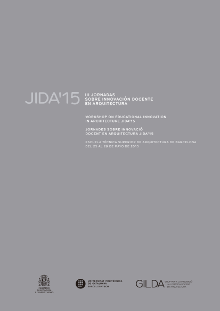Emergent digital design strategies in architecture: tools and methodologies
DOI:
https://doi.org/10.5821/jida.2015.5083Resumen
The emergence of digital tools in architecture since the beginning of the XXI century is deeply transforming the protocols, the design methodologies, and the conceptualization of the discipline. Traditional architectural education has remained at the periphery of these developments, whereas certain “advanced” architectural schools are deploying tremendous efforts to embrace these tools. However, their embedment into pedagogical practice is not devoid of problems and inconsistencies. This paper explores how several digital tools are being actively incorporated into the curriculum at the Institute for Advanced Architecture (Iaac) in Barcelona. It features relevant examples of urban design projects developed during three distinctive architectural design studios: two at the undergraduate level and one masters degree program. Several digital tools currently available for architectural analysis, design, and representation are explored, with an objective to identify and propose their suitable implementation in current and future architectural design studios. It establishes how they might affect design methodologies, as well as identifying problems, challenges, and potentials.Ver información del DOI en DOIBoard Crossref (by UPC)






















